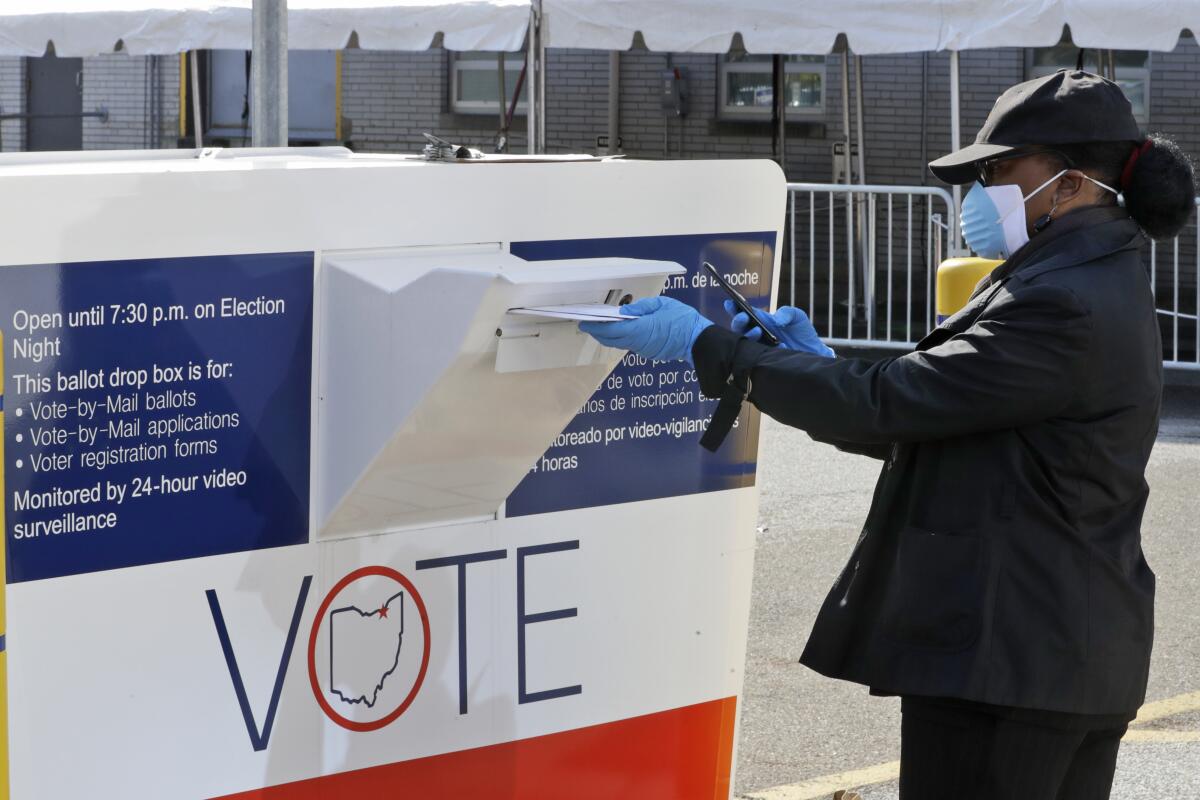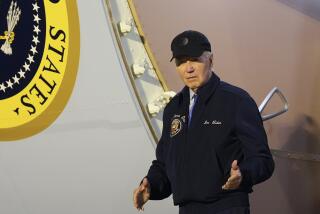Biden wins Ohio’s mail-in primary; dozens of Wisconsin voters and workers test positive for coronavirus

COLUMBUS, Ohio — Joe Biden won Ohio’s presidential primary Tuesday, clinching a contest that was less about the Democratic nomination and more about how states can conduct elections in the era of the coronavirus.
The primary was the first major test of statewide elections via mail amid an outbreak. And the results were mixed.
There were reports of confusion but no widespread disruption. It wasn’t like Wisconsin earlier this month, when voters were forced to overlook social distancing guidelines to stand in line wearing masks to cast a ballot.
Still, overall turnout appeared to be off. The secretary of state’s office said that about 1.5 million votes had been cast as of midday Saturday, down sharply from the 3.2 million cast in Ohio’s 2016 presidential primary.
“Within the context of the threat of the virus, it’s a decision that we will have made the best of,” Republican Ken Blackwell, a former Ohio elections chief who chairs the bipartisan International Foundation for Electoral Systems, said of mail-in balloting.
The primary, originally scheduled for March 17, was delayed just hours before polls were supposed to open. Citing a “health emergency,” Republican Gov. Mike DeWine recommended that in-person balloting not be held until June 2. But amid legal challenges, officials moved balloting to this week while converting to a mail-in process since the state remains under a stay-at-home order.
Most Ohioans casting absentee ballots had to run at least three pieces of mail — an application, a blank ballot and a completed one — through the U.S. Postal Service. Homeless and disabled people were allowed to cast in-person ballots at county election board offices, as were voters not receiving ballots by mail in time to participate.
Lynne Marshall of Sylvania, Ohio, opened her mailbox Tuesday and was disappointed to see that her ballot had not arrived after a monthlong wait and countless calls to the state and local election offices. She then agonized over whether to cast a vote in person at the election board and put her health at risk or stay home and skip an election for the first time that she can remember.
“I don’t know what to do,” she said. “I’m just really disgusted with it all. Of course, I’ll feel guilty if I don’t vote.”

With his last competitor, Vermont Sen. Bernie Sanders, suspending his campaign weeks ago, Biden has emerged as the presumptive Democratic presidential nominee, and the Ohio results were never in doubt. Still, moving to a mail-in primary on the fly was watched around the country as states with upcoming elections grapple with how to fulfill one of the most basic functions of American democracy, voting, while battling the coronavirus’ spread.
States have taken drastically different approaches to elections during the pandemic. New York said Monday that it would cancel its June presidential primary. Wisconsin, over warnings from the governor and public health experts, proceeded with in-person balloting this month and now is reporting that more than 50 people who voted in person or worked the polls have tested positive for the coronavirus.
Some governors have suggested that they would consider moving to an all-mail voting system for the November general election, something President Trump has strongly opposed. The National Conference of State Legislatures says five states currently conduct all elections entirely by mail: Colorado, Hawaii, Oregon, Washington and Utah.
Maryland was also balancing balloting and voter safety on Tuesday as polling centers opened to conduct a special election to finish the term of the late Rep. Elijah Cummings (D-Md.).
Most of the focus, though, was on Ohio, which also held congressional primaries. It’s traditionally a battleground state that has shifted to more consistently Republican in recent cycles. Trump won it by 8 percentage points in 2016, after President Obama, with Biden as his running mate, carried the state twice.
Jen Miller, the head of the League of Women Voters in Ohio, said it will be impossible to know how many people stayed home because they didn’t get a ballot in time.
“I do suspect a lot of people are waiting to see if their ballot comes in the mail today,” said Miller, the organization’s state director. “We’ve had people waiting weeks and weeks.”
Meanwhile, Ohio’s early voting began Feb. 19, meaning Sanders was in a position to still pick up some of its delegates. The senator has reminded his supporters that his name will be on the ballot in all upcoming races and urged them to vote for him so he can amass delegates and better shape the Democratic Party platform at its national convention in Milwaukee.
But Sanders has endorsed Biden, and a group of his top advisors announced Tuesday that they were forming an outside political committee to promote the former vice president and progressive values. The efforts at unification of Democratic forces against Trump in November could defuse tensions heading into the party’s convention — which has already been delayed from June until August and may yet be further marred by the virus.
In Wisconsin, the state Department of Health Services reported the possible polling-linked coronavirus figures on Tuesday, three weeks after the April 7 presidential primary and spring election that drew widespread concern because of voters waiting in long lines to cast ballots in Milwaukee. Democratic Gov. Tony Evers tried to move to a mail-order election but was blocked by the Republican Legislature and conservative controlled Wisconsin Supreme Court.
Evers and others had warned that holding the election would cause an increase in coronavirus cases.
Several of the 52 people who have tested positive and were at the polls also reported other possible exposures, said Wisconsin Emergency Management spokesman Andrew Beckett. Most of the positive cases were in Milwaukee County.
More to Read
Get the L.A. Times Politics newsletter
Deeply reported insights into legislation, politics and policy from Sacramento, Washington and beyond. In your inbox three times per week.
You may occasionally receive promotional content from the Los Angeles Times.










